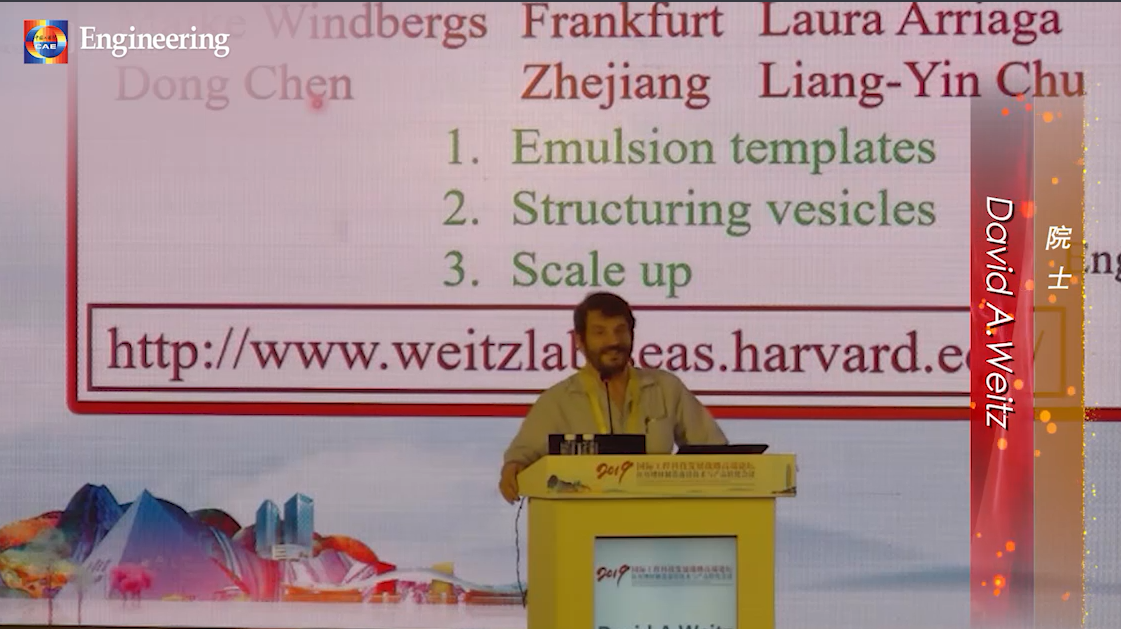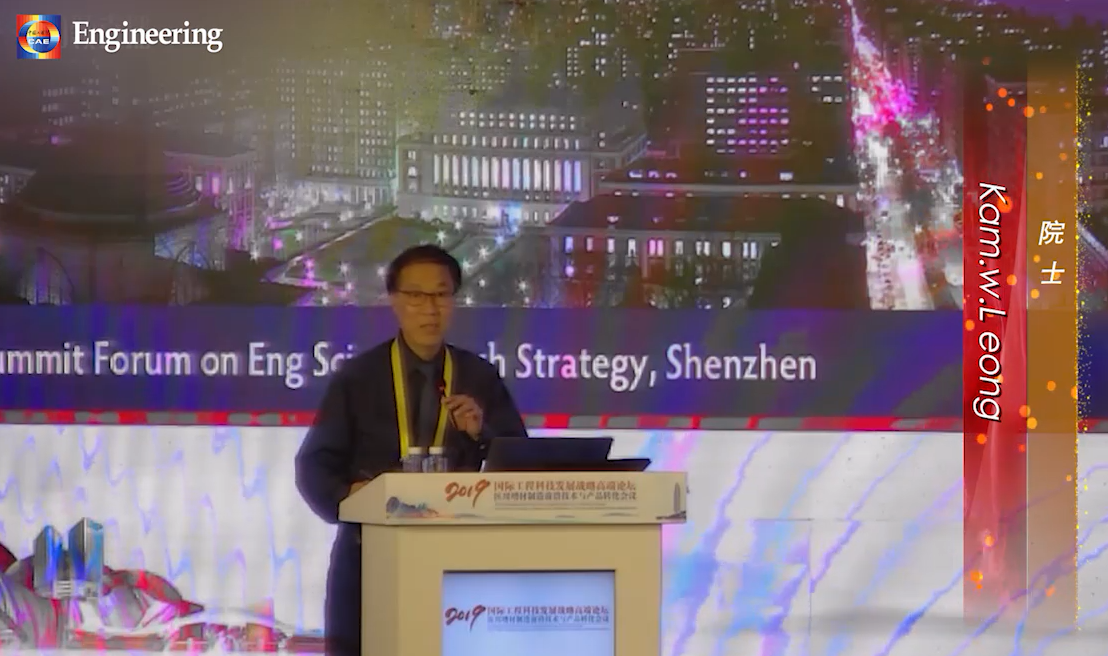Search scope:
排序: Display mode:
Digital microfluidics: A promising technique for biochemical applications
He WANG, Liguo CHEN, Lining SUN
Frontiers of Mechanical Engineering 2017, Volume 12, Issue 4, Pages 510-525 doi: 10.1007/s11465-017-0460-z
Digital microfluidics (DMF) is a versatile microfluidics technology that has significant application
Keywords: digital microfluidics electrowetting on dielectric discrete droplet biochemistry
Frontiers of Chemical Science and Engineering Pages 1643-1650 doi: 10.1007/s11705-022-2201-z
Keywords: microcapsule emulsion microfluidics selective permeation stimuli-triggered release
Microfluidics for Medical Additive Manufacturing Review
Jie Wang, Changmin Shao, Yuetong Wang, Lingyun Sun, Yuanjin Zhao
Engineering 2020, Volume 6, Issue 11, Pages 1244-1257 doi: 10.1016/j.eng.2020.10.001
Keywords: Microfluidics Biomaterial Additive manufacturing Droplet Fiber
Microfluidic production of liposomes through liquid–liquid phase separation in ternary droplets
Frontiers of Chemical Science and Engineering 2022, Volume 16, Issue 6, Pages 1017-1022 doi: 10.1007/s11705-021-2118-y
Keywords: microfluidics liposomes ternary droplets phase separation
Mechanically Strong Proteinaceous Fibers: Engineered Fabrication by Microfluidics Review
Jing Sun, Jingsi Chen, Kai Liu, Hongbo Zeng
Engineering 2021, Volume 7, Issue 5, Pages 615-623 doi: 10.1016/j.eng.2021.02.005
Keywords: Proteinaceous fibers Microfluidics Soft materia l Biomaterials
Microfluidics for cell-cell interactions: A review
Rui Li,Xuefei Lv,Xingjian Zhang,Omer Saeed,Yulin Deng
Frontiers of Chemical Science and Engineering 2016, Volume 10, Issue 1, Pages 90-98 doi: 10.1007/s11705-015-1550-2
Keywords: microfluidic chip co-culture cell-cell interactions review
Modeling and simulation of droplet translocation and fission by electrowetting-on-dielectrics (EWOD)
Nathan HOWELL, Weihua LI
Frontiers of Mechanical Engineering 2010, Volume 5, Issue 4, Pages 376-388 doi: 10.1007/s11465-010-0104-z
Keywords: electrowetting-on-dielectrics (EWOD) electrowetting microfluidics droplet translocation droplet fission
Changmin Shao, Yuxiao Liu, Junjie Chi, Fangfu Ye, Yuanjin Zhao
Engineering 2021, Volume 7, Issue 12, Pages 1778-1785 doi: 10.1016/j.eng.2020.06.031
With the advantages of better mimicking the specificity of natural tissues, three-dimensional (3D) cell culture plays a major role in drug development, toxicity testing, and tissue engineering. However, existing scaffolds or microcarriers for 3D cell culture are often limited in size and show suboptimal performance in simulating the vascular complexes of living organisms. Therefore, we present a novel hierarchically inverse opal porous scaffold made via a simple microfluidic approach for promoting 3D cell co-culture techniques. The designed scaffold is constructed using a combined concept involving an emulsion droplet template and inert polymer polymerization. This work demonstrates that the resultant scaffolds ensure a sufficient supply of nutrients during cell culture, so as to achieve large-volume cell culture. In addition, by serially planting different cells in the scaffold, a 3D co-culture system of endothelial-cell-encapsulated hepatocytes can be developed for constructing certain functional tissues. It is also demonstrated that the use of the proposed scaffold for a co-culture system helps hepatocytes to maintain specific in vivo functions. These hierarchically inverse opal scaffolds lay the foundation for 3D cell culture and even the construction of biomimetic tissues.
Keywords: Microfluidics Inverse opal Cell culture Droplet Biomaterial
Microfluidic dual loops reactor for conducting a multistep reaction
Si Hyung Jin, Jae-Hoon Jung, Seong-Geun Jeong, Jongmin Kim, Tae Jung Park, Chang-Soo Lee
Frontiers of Chemical Science and Engineering 2018, Volume 12, Issue 2, Pages 239-246 doi: 10.1007/s11705-017-1680-9
Keywords: microfluidics multistep reaction rotary mixing nanoparticle

Weitz: Soft Functional Materials Prepared by Microfluidics (2019-6-15)
David A.Weitz(院士)
20 Jan 2021
Keywords: 医学
Rotation of Biological Cells: Fundamentals and Applications Review
Tao Tang, Yoichiroh Hosokawa, Takeshi Hayakawa, Yo Tanaka, Weihua Li, Ming Li, Yaxiaer Yalikun
Engineering 2022, Volume 10, Issue 3, Pages 110-126 doi: 10.1016/j.eng.2020.07.031
Cell rotation is one of the most important techniques for cell manipulation in modern bioscience, as it not only permits cell observation from any arbitrary angle, but also simplifies the procedures for analyzing the mechanical properties of cells, characterizing cell physiology, and performing microsurgery. Numerous approaches have been reported for rotating cells in a wide range of academic and industrial applications. Among them, the most popular are micro-robot-based direct contact manipulation and field-based non-contact methods (e.g., optical, magnetic, electric, acoustic, and hydrodynamic methods). This review first summarizes the fundamental mechanisms, merits, and demerits of these six main groups of approaches, and then discusses their differences and limitations in detail. We aim to bridge the gap between each method and illustrate the development progress, current advances, and prospects in the field of cell rotation.
Keywords: Cell rotation Cell reorientation Micromanipulation Microfluidics
Biomimetic Erythrocyte-Like Particles from Microfluidic Electrospray for Tissue Engineering
Zhiqiang Luo,Lijun Cai,Hanxu Chen,Guopu Chen,Yuanjin Zhao,
Engineering doi: 10.1016/j.eng.2023.08.022
Keywords: Biomimetics Erythrocyte Tissue engineering Microfluidics Electrospray Oxygen delivery
A review on emulsification via microfluidic processes
Yichen Liu, Yongli Li, Andreas Hensel, Juergen J. Brandner, Kai zhang, Xiaoze Du, Yongping Yang
Frontiers of Chemical Science and Engineering 2020, Volume 14, Issue 3, Pages 350-364 doi: 10.1007/s11705-019-1894-0
Keywords: microfluidics emulsification capillary number droplet breakup
Microfluidic Generation of Multicomponent Soft Biomaterials Review
Yuetong Wang, Luoran Shang, Yuanjin Zhao, Lingyun Sun
Engineering 2022, Volume 13, Issue 6, Pages 128-143 doi: 10.1016/j.eng.2021.02.026
Keywords: Soft biomaterial Microfluidics Multicomponent Microparticle Microfiber

Leong:Can Microfluidics Address the Biomanufacturing Challenge of Drug-Gene-Celltherap(2019-6-15)
Kam. W. Leong(院士)
20 Jan 2021
Keywords: 医学
Title Author Date Type Operation
Digital microfluidics: A promising technique for biochemical applications
He WANG, Liguo CHEN, Lining SUN
Journal Article
Porous ultrathin-shell microcapsules designed by microfluidics for selective permeation and stimuli-triggered
Journal Article
Microfluidics for Medical Additive Manufacturing
Jie Wang, Changmin Shao, Yuetong Wang, Lingyun Sun, Yuanjin Zhao
Journal Article
Microfluidic production of liposomes through liquid–liquid phase separation in ternary droplets
Journal Article
Mechanically Strong Proteinaceous Fibers: Engineered Fabrication by Microfluidics
Jing Sun, Jingsi Chen, Kai Liu, Hongbo Zeng
Journal Article
Microfluidics for cell-cell interactions: A review
Rui Li,Xuefei Lv,Xingjian Zhang,Omer Saeed,Yulin Deng
Journal Article
Modeling and simulation of droplet translocation and fission by electrowetting-on-dielectrics (EWOD)
Nathan HOWELL, Weihua LI
Journal Article
Hierarchically Inverse Opal Porous Scaffolds from Droplet Microfluidics for Biomimetic 3D Cell Co-Culture
Changmin Shao, Yuxiao Liu, Junjie Chi, Fangfu Ye, Yuanjin Zhao
Journal Article
Microfluidic dual loops reactor for conducting a multistep reaction
Si Hyung Jin, Jae-Hoon Jung, Seong-Geun Jeong, Jongmin Kim, Tae Jung Park, Chang-Soo Lee
Journal Article
Weitz: Soft Functional Materials Prepared by Microfluidics (2019-6-15)
David A.Weitz(院士)
20 Jan 2021
Conference Videos
Rotation of Biological Cells: Fundamentals and Applications
Tao Tang, Yoichiroh Hosokawa, Takeshi Hayakawa, Yo Tanaka, Weihua Li, Ming Li, Yaxiaer Yalikun
Journal Article
Biomimetic Erythrocyte-Like Particles from Microfluidic Electrospray for Tissue Engineering
Zhiqiang Luo,Lijun Cai,Hanxu Chen,Guopu Chen,Yuanjin Zhao,
Journal Article
A review on emulsification via microfluidic processes
Yichen Liu, Yongli Li, Andreas Hensel, Juergen J. Brandner, Kai zhang, Xiaoze Du, Yongping Yang
Journal Article
Microfluidic Generation of Multicomponent Soft Biomaterials
Yuetong Wang, Luoran Shang, Yuanjin Zhao, Lingyun Sun
Journal Article
Leong:Can Microfluidics Address the Biomanufacturing Challenge of Drug-Gene-Celltherap(2019-6-15)
Kam. W. Leong(院士)
20 Jan 2021
Conference Videos








